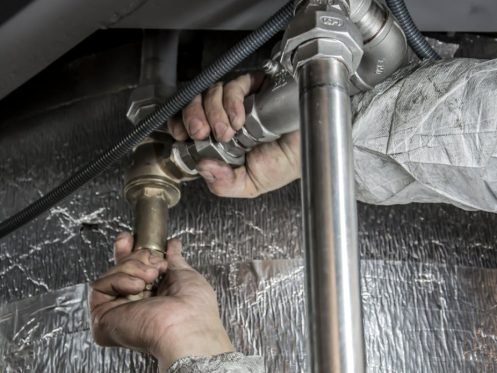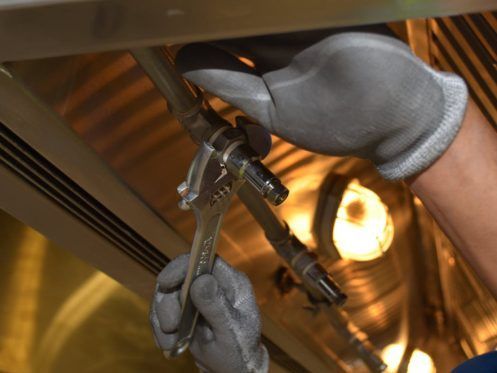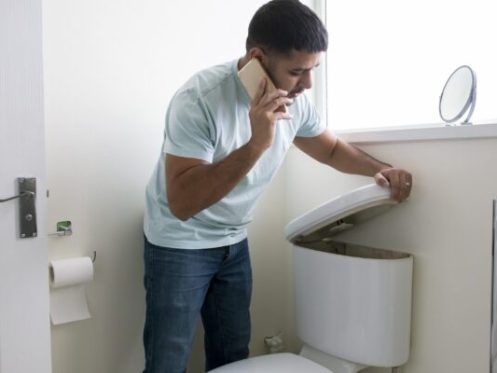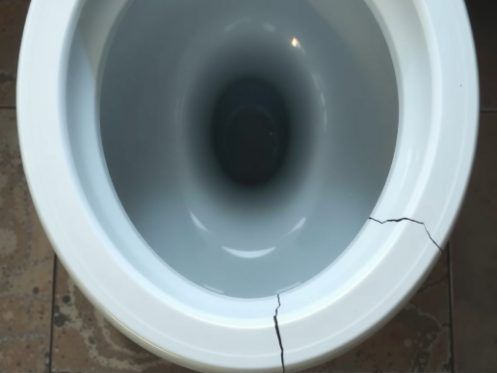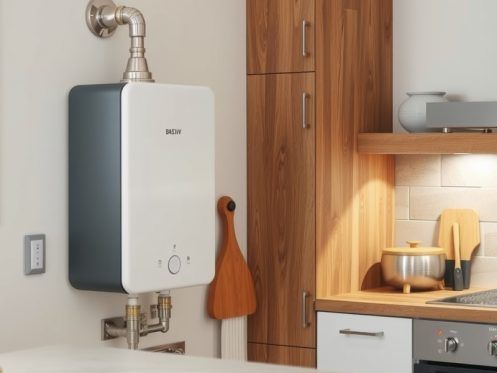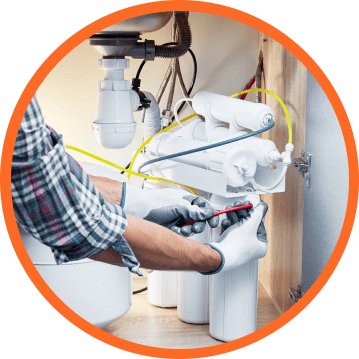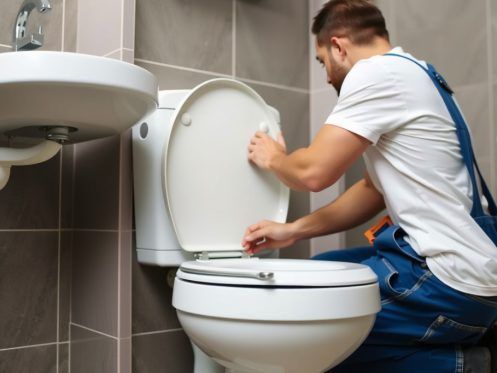
There’s nothing like the sound of a constantly running toilet in the middle of the night to remind you that something’s not quite right in the bathroom. A leaking toilet might seem like a minor nuisance at first, just a drip here, a trickle there—but left unchecked, it can waste gallons of water, inflate your utility bills, and even cause damage to your floors or walls.
At Rare Breed Plumbing, we know how frustrating it can be to track down the source of a leak, especially when it feels like water is coming from everywhere. But don’t worry—whether you’re a weekend DIYer or someone who just wants the problem gone, we’ve got your back. Let’s break it down and tackle that leaky toilet step by step.
First Off… What’s Leaking?
Toilets are simple in design, but they’ve got a lot of parts that can fail over time. When water starts appearing where it shouldn’t, the first step is figuring out where it’s coming from. Is it the base, the tank, or the bowl? Maybe the leak isn’t even a leak at all—just condensation. Let’s explore the most common culprits.
Water Pooling Around the Base of the Toilet?
Water on the floor around the toilet might look like a disaster waiting to happen, but sometimes, it’s not as bad as it seems. The most common cause here is a worn-out wax ring—the seal between the toilet base and the closet flange on your floor. This wax ring keeps water and sewer gas from leaking out. Over time, it can dry out, crack, or shift, especially if the toilet has been nudged or rocked a bit. When that happens, every flush can send a bit of water out from underneath the toilet base.
But that’s not all. Loose tank bolts or a faulty gasket between the tank and bowl can also cause water to sneak down to the floor. Even cracks in the porcelain of the toilet base or tank can be culprits, though that’s less common.
Leaking from the Toilet Bowl?
If you notice water trickling down the side of the bowl, it might be coming from the bowl itself. Cracks in the toilet porcelain—particularly hairline cracks—can form with age or from impact. These may start off small but can get worse with every flush. If the bowl is leaking, unfortunately, it typically means replacing the entire toilet bowl, especially if it’s a structural crack.
Sometimes, what looks like a bowl leak is actually water dripping from the tank above, sneaking down and making it appear like the bowl is the problem. Always check for upper leaks before assuming the bowl itself is damaged.
Leaks from the Toilet Tank?
Your toilet tank is basically a small reservoir that refills after each flush. It holds several gallons of water and uses gravity to do its job. So naturally, a leak here can mean serious water waste. Common causes include a faulty flush valve, a deteriorated flapper, or worn-out tank bolts. If the tank bolts or the tank to bowl gasket are degraded, they can allow slow leaks to develop over time.
The fill valve and float ball also play a big role. If they’re misadjusted or broken, the water level can rise too high and spill into the overflow tube, causing the tank to constantly refill. This doesn’t always leak water onto the floor, but it does cause continuous water waste—and noise.
It Might Just Be Condensation
Before you panic and assume your toilet is haunted by plumbing issues, take a second to check if the “leak” is actually condensation. On humid days, especially during summer, cold water in the toilet tank can cause moisture from the air to condense on the outside of the tank. This water drips down and forms puddles that look a lot like a leak.
You can usually tell it’s condensation if the tank is cold and there’s no dripping from visible connections. The fix here isn’t plumbing—it’s about air control and insulation.
That Should Cover the Usual Suspects…
Now that we’ve identified what might be leaking, let’s talk about what to do about each situation. With the right tools and know-how (and maybe a trip to your local hardware store), some of these fixes are DIY-friendly. Others? Well, let’s just say that’s what we’re here for.
Dealing With Each Type of Leak
Alright, roll up your sleeves (or just call us—we don’t judge). Let’s walk through how we at Rare Breed Plumbing would approach each of these issues, and what you can try before you reach for the phone.
Toilet Base Leak Fix
When water shows up around the toilet base, we’re usually looking at a failed wax ring. Here’s how we’d fix it:
First, we shut off the water supply line and flush the toilet to drain the tank and bowl. Then, we disconnect the water supply and remove the nuts from the base bolts using an adjustable wrench. After lifting the toilet straight up and setting it aside, we scrape away the old wax seal and inspect the closet flange for damage. If the flange is in good shape, we install a new wax ring, reseat the toilet, and bolt it back down evenly.
Finally, we reconnect the water supply and test for leaks. No more puddles!
Toilet Bowl Leak Fix
If the bowl itself is leaking due to a crack, that toilet’s done. Toilet porcelain doesn’t patch well—at least not in a way that’ll last. We always recommend replacing a cracked toilet bowl.
First, we check to ensure the bowl is truly the source of the leak. If so, we shut off the water supply, drain the tank and bowl, and detach the toilet just like we would with a base leak. Then we replace the entire unit, install a new wax seal, and reattach the water supply line. With a new bowl (or full toilet replacement), you get peace of mind and improved water efficiency too.
Toilet Tank Leak Solutions
Tank leaks are a bit more versatile in their causes and solutions.
If the fill valve is faulty or misaligned, we’ll adjust or replace it to make sure the water level sits just below the top of the overflow tube. A constantly running toilet usually means a bad flapper or chain, both of which are simple replacements. We also check the tank bolts and the tank-to-bowl gasket. If they’re corroded, brittle, or loose, they’ll need to be replaced. For this, we remove the tank from the bowl and install new rubber seals and washers to ensure a watertight fit.
It’s also a great time to inspect the flush valve while we’re in there. If it’s worn or cracked, swapping in a new one can prevent future problems.
Condensation Issues – Best Fixes
Condensation isn’t technically a leak, but it’s still annoying.
The simplest fix? An insulating tank liner. It’s like a cozy blanket for your toilet tank. It keeps the outside surface from getting cold enough to cause condensation in the first place. You can pick one up from a local hardware store or ask us to install one during your next service call.
Another trick is to reduce the humidity in the bathroom—run the fan, open a window, or use a dehumidifier. Sometimes, a mixing valve on the water supply line that allows a tiny amount of warm water into the tank can also help.
One Leak at a Time…
Every toilet tells a story. Whether it’s a drippy tank bolt or a faulty gasket, the key is diagnosing the issue and applying the right solution. If that sounds like a headache, don’t stress. That’s literally why we do what we do at Rare Breed Plumbing.
When to Call a Professional for a Leaking Toilet?
Some toilet fixes are as simple as turning a wrench or swapping out a flapper. But others? Not so much.
If you’ve tried the basics and the leak keeps coming back—or if you’re unsure what’s causing it—it’s probably time to call in the pros. Persistent leaks can point to deeper issues, like a cracked toilet, deteriorated seals, or even a damaged flange hidden under the floor. These problems can’t be ignored, and DIY repairs might just mask the symptoms while the damage gets worse.
Also, if you don’t feel confident removing and reseating a toilet (which involves lifting heavy porcelain and resealing pipes), it’s safer to call a licensed master plumber. We’ve seen plenty of cases where a well-intentioned repair led to more trouble—water damage, mold, and ruined flooring.
At Rare Breed Plumbing, we’re not just about quick fixes. We get to the root of the problem, do clean work, and make sure your toilet is leak-free and running like new. So if your toilet is still acting up after some elbow grease, give us a shout.
Don’t Let That Toilet Leak Ruin Your Day
Leaks have a sneaky way of turning small annoyances into big repairs. But when it comes to knowing how to deal with a leaky toilet, knowledge is power, and action saves gallons of water (and dollars) down the line.
If you’ve got a suspicious puddle, a hissing tank, or a toilet that just won’t stop running, don’t wait for it to get worse. Reach out to the experts at Rare Breed Plumbing. Whether it’s a quick fix, a full toilet replacement, or just some honest advice, we’re ready to help.
📞 Call us today or book your appointment online—your toilet (and your water bill) will thank you!

